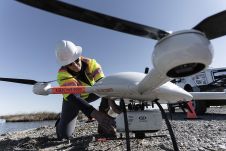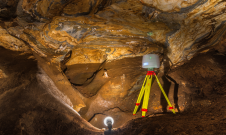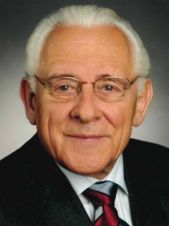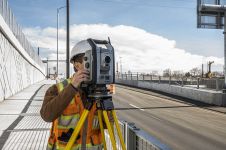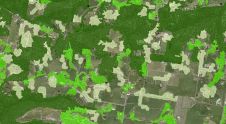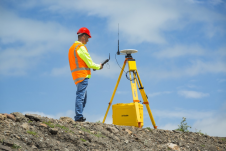陆地管理轻型移动收集工具
哥伦比亚的概念证明
迫切需要在全球范围内管理财产和土地利用权,以此作为社会和经济增长的基础。尽管政府和国际组织在过去几十年中进行了大量投资,但仍估计,从全球角度来看,人们及其土地之间的关系中有75%没有记录。那么,可以使用哪些方法和技术来开发所有人以及我们这一代人的土地管理系统?如哥伦比亚的这一概念证明,轻型移动收集工具可能会提供解决方案。
经过Mathilde Molendijk(Kadaster), Javier Morales (ITC/Twente University) and Christiaan Lemmen (Kadaster), The Netherlands
哥伦比亚面临的挑战非常复杂。武装冲突源于土地争端,具有巨大的人类,社会和经济影响。根据UHNCR的说法,这导致了超过570万人在内部流离失所,使哥伦比亚成为世界上国内流离失所者数量最多的国家。另一个挑战是哥伦比亚农村地区财产的非正式,其中approximately 4 million rural parcels not formally registered。
农村地区的土地权
土地正规化的责任rights for rural areas and the administration of those rights are distributed between several organisations. The Colombian Ministry of Agriculture and Rural Development is responsible for the process of formalisation of rural properties. The Geographical Institute ‘Agustín Codazzi’ (IGAC) is, amongst others, responsible for the National Cadastre of Colombia and therefore includes the results of the formalisation into the cadastral map. The Register of the Notaries, the ‘Superintendencia de Notariado y Registro’ (SNR), maintains the formal deed register. According to the Ministry of Agriculture and Rural Development, there are approximately 1.7 million unregistered rural parcels. Another 1.8 million rural parcels are currently registered in the National Cadastre (under IGAC), but without the accompanying registration by the notaries. The Ministry wants to accelerate the formalisation process in rural areas, which is seen as a prerequisite to stimulate agrarian production and to combat poverty in rural areas. It should be noted that several other urban cadastres exist, such as the cadastre of main cities like Bogota, Medellin and Cali.
Cadastral maps
For the cadastral maps of the rural areas, a centimetre-level representation of boundary vertexes is required, derived from very accurate field surveys. This high accuracy is based on well-defined standardised cadastral mapping approaches and is, for this reason, necessary even for remote rural areas. This demand is linked to time-consuming, costly and cumbersome processes and is perhaps characteristic of the disappointing results in land administration worldwide. It will take many decades and require substantial investments before the task can be finalised in this way. The Ministry of Agriculture, the Register of the Notaries and IGAC are therefore exploring alternative approaches, such as fit-for-purpose land administration.
Fit-for-purpose approach
在一个定制的方法,因为的边界ls are identified in the field and drawn on plots of orthophotos using locally trained technicians. The approach is highly participatory. It has previously been implemented in countries such as Rwanda, Kyrgyzstan, Ethiopia, Lesotho and in some Eastern European countries. After the boundaries have been drawn, a preliminary identifier of the spatial unit (parcel) is drawn on the photo and provided to the claimant on a small piece of paper. The claimant gives this piece of paper to the person responsible for recording the administrative attributes. Surveys are only needed for data completion if the boundaries are not visible on the orthophotos. The fieldwork is paper-based and is a proven approach. Collected data can be digitised back in the office. The approach is creating scalable land administration solutions, and meets the societal needs of today.
哥伦比亚农业和农村发展部具有基于论文的现场工作(图1),并且与其他土地管理机构一起对此过程的计算机化版本非常感兴趣。该领域的轻量级设备在哥伦比亚山区非常有效,并且可以使用开发应用程序的工具和技术。
适合使用智能手机应用程序
适合用途的智能手机应用程序使农民和基层测量师能够自行走动物业周围。这些基层测量师是来自村庄的年轻人,受到社区的信任,并受到专业人士的教育和指导。可自由下载的应用程序带有特定区域的正常光,并且可以根据标准数据模型轻松地在现场收集空间和管理信息。数据仅收集一次;一个属性的空间和行政细节从形式化过程开始就可以整合,并且可以互操作。所有数据都可以离线收集,后来透明地上传到云中。在市政厅的一次乡村会议上,社区成员聚集在一起查看地图上的所有收集数据,并讨论和调和结果。
During the adjudication process in the field, disputes may lead to the creation of overlaps between polygons. In that case, those overlaps are mapped and the related conflicts have to be solved. Bigger ‘gaps’ represent areas to be surveyed. This may concern government-owned lands which have to be identified and included in the system.
在这种情况下,设计环境基于ESRI的Collector应用程序,该应用程序允许非常有效的数据收集。该应用程序与Trimble R1结合使用,通过蓝牙连接,以获得亚米的精度。R1和Collector应用程序之间的接口可以从智能手机管理(图2)。鉴于农村土地的价值通常相当低,边界的内在精度,甚至是面积计算的现有规范,因此这种配置适合目的。具有收集属性的基于云的数据库的数据结构基于土地管理域模型,该模型是一种灵活的ISO标准,广泛适用于土地管理。它包括社交权限域模型,该模型为应用程序提供了概念。

Trimble R1 with Bluetooth connection with a smartphone
基于多边形而不是基于边界
The data collection method is ‘polygon-based’ rather than ‘boundary-based’ (Figure 3). The collected polygons with associated attributes are considered to be ‘evidence from the field’. Data collected from the field can be processed and handled in a (cloud-based) geographic information system (GIS), where the collected polygons can be superimposed onto the imagery. Between the polygons, the boundaries will be visible as objects in most cases: fences, hedges, trees, ditches, roads, etc. If those visible objects are not spatial units in themselves, the boundaries can easily be vectorised today and in the future it may be possible to conduct automatic feature extraction. Topology can be introduced if needed.
Imagery
Imagery is loaded in advance. Most boundaries are clearly visible on aerial photos or on satellite imagery. This imagery should be ‘ready to go’, with proper cache levels, scales, formats, etc. The imagery needs to be cached so it can be used as a base map or a ‘layer’ to facilitate very close zooming. Then physical features can be picked out of the imagery, such as fences, hedgerows, large stones, walls, ditches, etc. The polygons or tracks can be recorded with the R1 or with standard smartphone GPS. Tracks can be visualised by superimposition over the aerial photo. This allows identification of the visual boundaries.
Participatory approach
Community involvement is required; the very nature of cadastral survey requires the participation of neighbours, family members, etc. Therefore, the mayor is informed in advance to ensure awareness and involvement of all parties. Everyone can follow the process on-site in the field. Collected data can be sent with Esri’s Collector App directly to a cloud-based GIS environment (Figure 4), enabling everyone to follow the process remotely – this is important for the involvement of stakeholders who cannot be on site – and it is possible to set up transparent access to this cloud environment. Usual procedures, such as public inspections, are conducted at village meetings in the town hall accompanied by trusted third parties.
Administrative data
哥伦比亚的所有公民都有一个唯一的ID号,并且该ID可以耦合到该应用程序,该应用具有将名称链接到多边形(周围)的功能。这意味着可以链接名称和其他相关属性和观察值。数字照片可以附加;现有文件,例如护照和ID,自拍照,业主群体的照片,契据或标题等现有法律文件的照片以及边界的照片都可以链接到多边形。
当只有一次并正确地收集一次验证选项时,就可以避免不一致。这避免了诸如拼写问题之类的情况,例如,在管理数据中记录了同一个人的几个不同名称,从而导致土地管理程序中有巨大的瓶颈。
总结说
Data collection should be fast, reliable and cheap (i.e. grassroot surveyors can do the job). It is expected that this app for field data collection will speed up and improve the formalisation process. The app should support acquisition of spatial data and administrative data in an integrated approach. If only handheld devices are being used (i.e. no survey equipment is needed), the work can be done in very efficiently.
概念证明在哥伦比亚内部和外部的几个论坛上都引起了人们的争论,并受到了良好的欢迎,结果是有希望的。在这种情况下应注意以下内容:目前,在哥伦比亚衡量和注册平均两公顷的包裹的费用约为1,000美元。还应尽快探索,测试和实施数百万个包裹以正式化,适合用途的方法和技术。
致谢
作者要感谢Esri和Trimble的关键支持。没有IGAC,农业和农村发展部,SNR,荷兰驻波哥大大使馆和荷兰企业局的支持,这项工作是不可能的。
Further Reading
- ISO(2012)。ISO 19152:2012,地理信息 - 土地管理领域模型。瑞士日内瓦1版
- Lemmen, C., Bennet, R., McLaren, R., Enemark, S., 2015.A New Era in Land Administration Emerges。188金宝搏特邀, January 2015
- 图,2010年。社会权限领域模型。丹麦哥本哈根的无花果出版物第52号
- 无花果/世界银行,2014年。适合用途的土地管理。无花果出版物第60号,无花果办公室,丹麦哥本哈根
作者的传记
Mathilde Molendijk在荷兰Kadaster International担任经理。她专注于拉丁美洲和加勒比地区地区的土地管理。此前,她曾在荷兰阿姆斯特丹VU大学担任计划经理 - 负责国际MSC计划的协调。
Mathilde.Molendijk@kadaster.nl
Dr Javier Moralesis assistant professor in the Geo-Information Processing department of the faculty of Geo-Information Science and Earth Observation (ITC) at the University of Twente, The Netherlands. Previously he worked as an advisor to the general director at the Instituto Geográfico Agustín Codazzi (IGAC), Bogotá, Colombia.
Dr Christiaan Lemmen是Kadaster International的大地顾问,也是荷兰特威特大学的地理信息科学与地球观察学院(ITC)的城市和地区规划和地理信息管理系的访问研究员。他是无花果工作组的主席。















